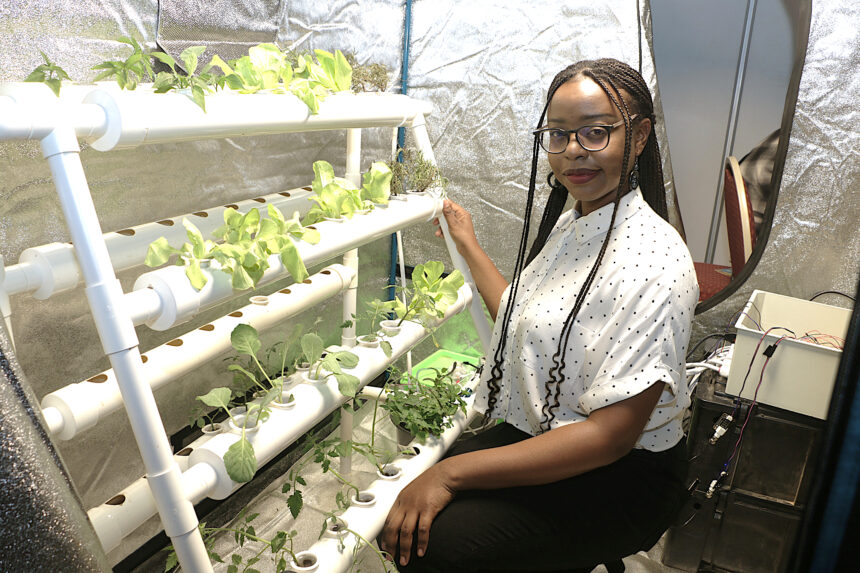Iuze Mukube
In a significant advancement within contemporary agriculture, where sustainability intersects with technological innovation, hydroponic systems powered by Artificial Intelligence (AI) are transforming the agricultural landscape by offering an efficient, cost-effective and environmentally-sustainable approach to food production.
Rikurora Karamata, a software engineer at the National Commission on Research, Science and Technology (NCRST), explained that the hydroponic system fundamentally involves cultivating plants solely with nutrient-rich water.
“It replaces the soil-based method, and the one that we are currently using is the nutrient film technique (NFD), which is just water being pumped up a tube, and then the water flows down back into the bucket, and the good thing is that the water is then recycled,” he added.
He indicated that the purpose of the AI application is to regulate the tent’s climatic conditions and infuse nutrients into the water.
Karamata highlighted that a significant advantage of this project is its ability to reduce the growth duration of various plants in comparison to traditional soil cultivation. For instance, he noted that while lettuce typically requires approximately four weeks to grow in soil, it can be cultivated in the tent in just two weeks, thanks to the optimal environment it provides for green leafy plants.
“Essentially, what happens with the tent is we have sensors that are placed around the tent, whereby we pick up different readings. So, you have your pH, your EC, your temperature, humidity, and light sensors,” stated Karamata.
Furthermore, a mobile application has been developed to transmit sensor data readings from the tent to an app via a local Wi-Fi network.
The engineer indicated that this project fell under his supervision as part of his honours programme, in collaboration with the Namibia University of Science and Technology (NUST) and the Independent Institute of Education (IIE) in South Africa. The project has undergone a series of deployments, initially in South Africa, followed by Namibia in the Donkerbos area of the Omaheke region, and is currently situated in Otjisa within the Kunene region. He emphasised that community engagement was prioritised through a co-design approach, where the tent set-up involved local community members, providing them with hands-on experience akin to a workshop.
“Community members end up having knowledge of the product at the end of the day, and so it definitely impacts them in a positive way because now they are able to grow vegetables within short periods of time,” he added. He further said, “The good thing is that it does not take up much space. What you need is about 1 in 1.5 metres.”
Given that the project remains in the research phase, Karamata is investigating the responses of AI to various climatic environments, which necessitates the selection of different deployment regions.
In addition to focusing on communal farming, the initiative aims to conserve indigenous plant species in these areas. Moreover, the AI-generated systems demonstrate superior performance compared to traditional hydroponics, as they significantly lessen the human labour required for operation. With AI systems, one can conduct nutrient dosing checks once a week, whereas traditional systems require daily attention.
“The biggest successes were obviously reaching the harvesting state, as before that we were still conducting the research, especially in Namibia.
As it’s the first of its kind, we really did not have many references to the Namibian context… And one of our challenges was remote support, where when one of the tents, for example, Donkerbos area, had a problem, we had to do remote support and assist the community leader from that area to fix the issue,” he noted.
Karamata highlighted the strategy aims to tackle food insecurity as it can be implemented in one’s backyard, significantly conserving water. Furthermore, once the project attains a suitable level of development, it will be beneficial for urban environments and regions lacking access to water resources.


